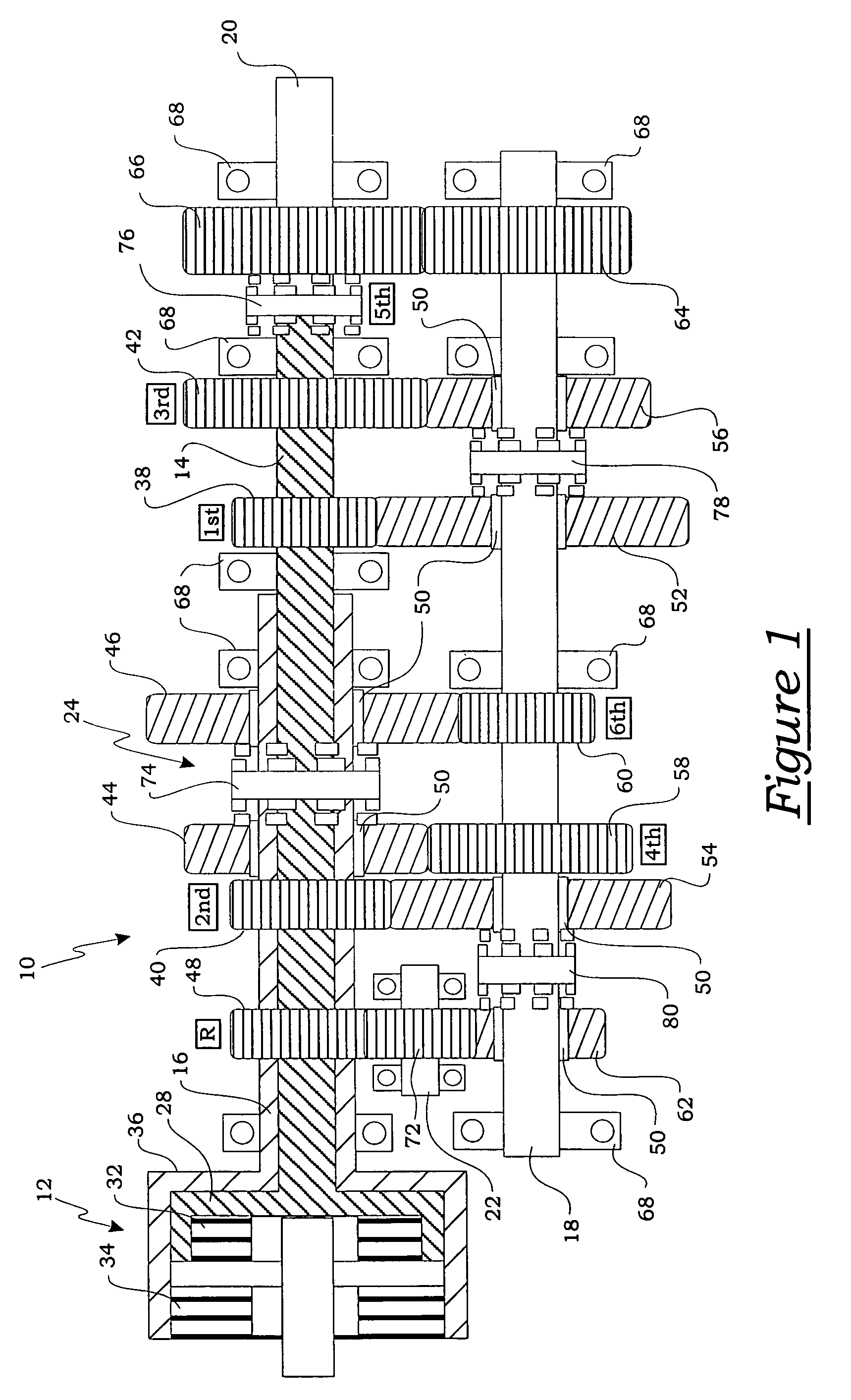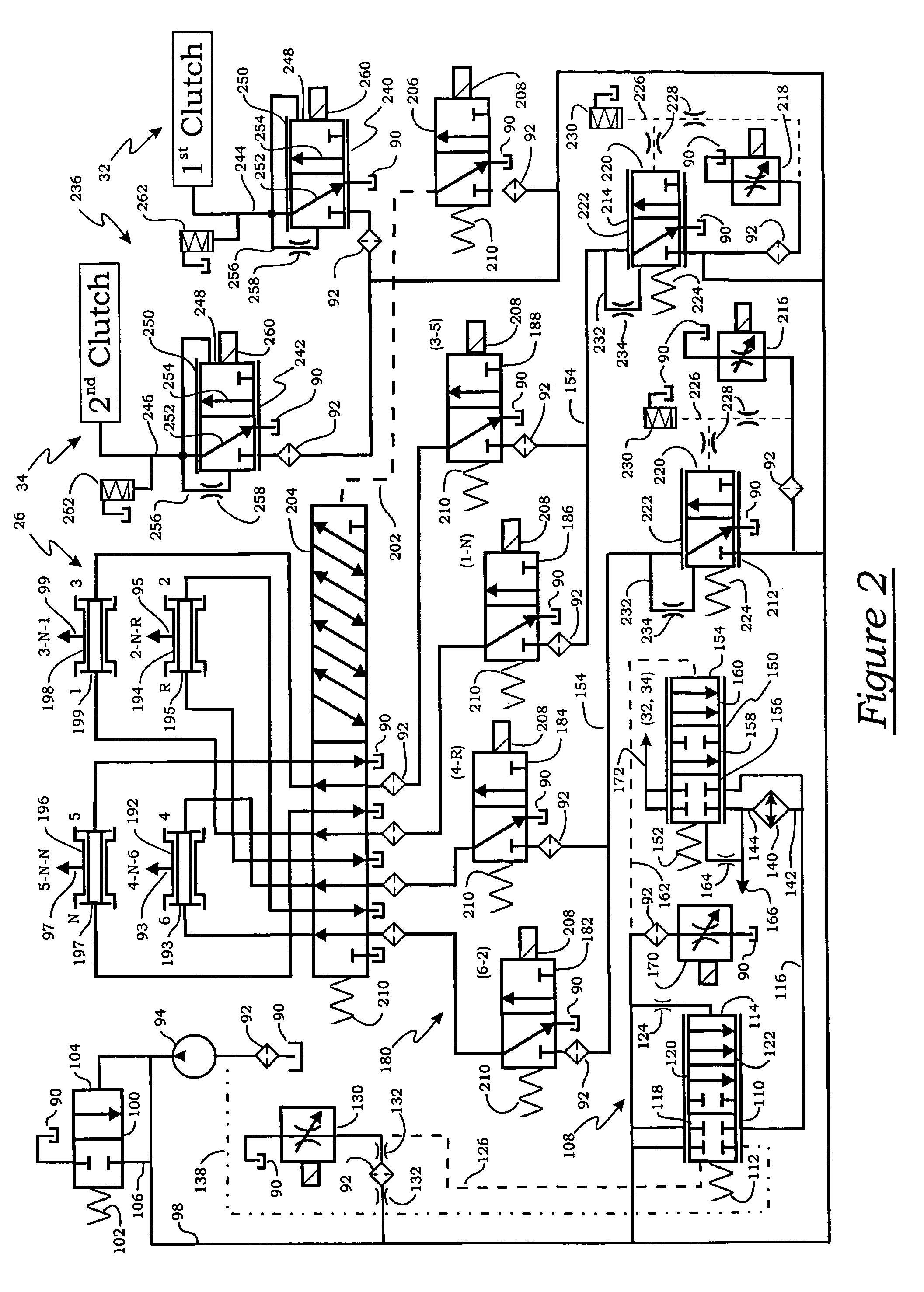Integrated control module for a dual clutch transmission
a control module and dual clutch technology, applied in mechanical equipment, gearing details, gearing connections, etc., can solve the problems of affecting the operation of the control module, and requiring a large amount of physical interaction from the operator, so as to reduce the assembly cost of individual and separate components, simplify the wiring harness of the integrated control module, and cost less to produce
- Summary
- Abstract
- Description
- Claims
- Application Information
AI Technical Summary
Benefits of technology
Problems solved by technology
Method used
Image
Examples
Embodiment Construction
)
[0024]A representative dual clutch transmission that may be controlled by the present invention is generally indicated at 10 in the schematic illustrated in FIG. 1. Specifically, as shown in FIG. 1, the dual clutch transmission 10 includes a dual, coaxial clutch assembly generally indicated at 12, a first input shaft, generally indicated at 14, a second input shaft, generally indicated at 16, that is coaxial to the first, a counter shaft, generally indicated at 18, an output shaft 20, a reverse counter shaft 22, a plurality of synchronizers, generally indicated at 24.
[0025]The dual clutch transmission 10 forms a portion of a vehicle powertrain and is responsible for taking a torque input from a prime mover, such as an internal combustion engine, and transmitting the torque through selectable gear ratios to the vehicle drive wheels. The dual clutch transmission 10 operatively routes the applied torque from the engine through the dual, coaxial clutch assembly 12 to either the first i...
PUM
 Login to View More
Login to View More Abstract
Description
Claims
Application Information
 Login to View More
Login to View More - R&D
- Intellectual Property
- Life Sciences
- Materials
- Tech Scout
- Unparalleled Data Quality
- Higher Quality Content
- 60% Fewer Hallucinations
Browse by: Latest US Patents, China's latest patents, Technical Efficacy Thesaurus, Application Domain, Technology Topic, Popular Technical Reports.
© 2025 PatSnap. All rights reserved.Legal|Privacy policy|Modern Slavery Act Transparency Statement|Sitemap|About US| Contact US: help@patsnap.com



